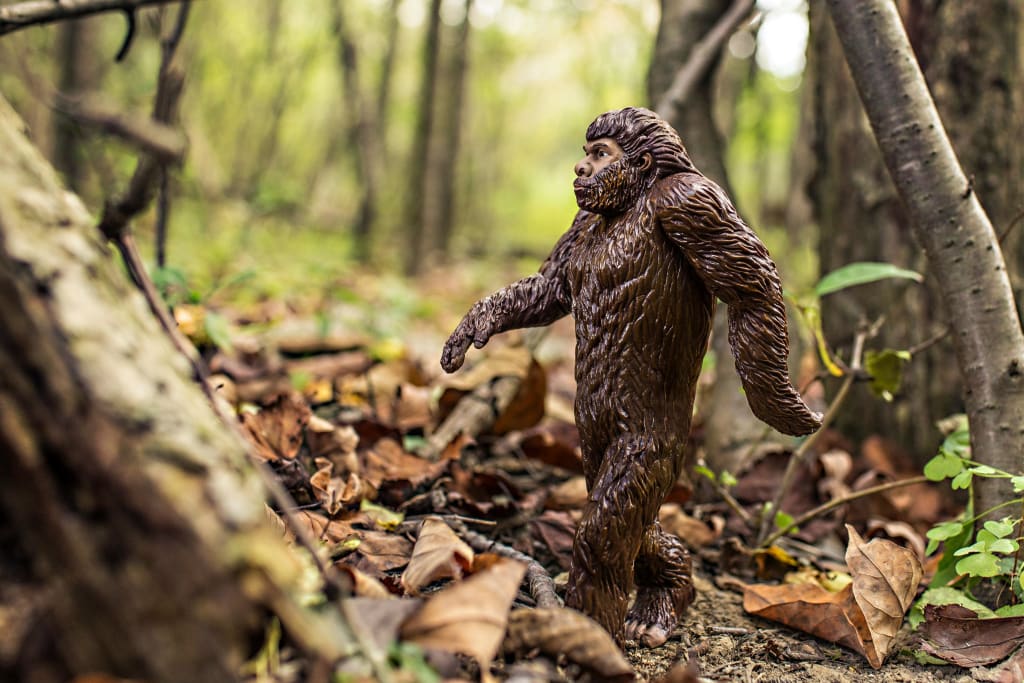
Bigfoot, otherwise known as Sasquatch, is one of the most resilient myths that exist in the North American folklore. The narrative revolving around this bizarre entity that has always been described as a huge, shaggy, apelike man walking on two legs has fascinated believers and non-believers for ages. It is believed that even though there is no concrete scientific proof backing its existence, people still talk about ‘’Bigfoot’’ due to many reports made by eyewitnesses including photographs as well as clips purporting to reveal its actual appearance.
The legend of Bigfoot has deep roots in Native American culture. Various tribes across North America have their own versions of a giant, hairy creature inhabiting the forests. For instance, the Salish people of the Pacific Northwest speak of "Sésquac," a term that translates to "wild man" or "hairy man." Similarly, the Algonquian tribes have tales of a creature known as the "Windigo," which shares characteristics with the modern Bigfoot.
European immigrants introduced their own ancient stories, causing a unique blend with the already existing local traditions. Local newspapers in the 19th century featured tales of gigantic hairy creatures cementing the image of Bigfoot in popular culture. But the present Bigfoot phenomenon dates back to the mid 20th century.
The Patterson-Gimlin” film, filmed by Roger Patterson and Bob Gimlin in 1967 in Bluff Creek, California, is just a three-minute clip that some claim shows a Bigfoot walking past. The creature looks at the camera as it walks away and then seemingly vanishes into thin air. How it moved its legs and arms are the subject of heated debate among scholars.
Legend has it that for many years now, there have been thousands of accounts by individuals who claim that they encountered a creature that resembles Bigfoot. These accounts originate from a variety of sources like hunters, hikers, and even police officers. Among the most common features of such encounters are a pungent smell, loud sounds coming from the creature itself and huge footprints observed by people who were within its proximity.
Among Bigfoot researchers, emphasis has been put on footprints, particularly. In isolated, heavily forested locations, these treads are often longer than fifteen inches. An instance of footnote detection was that of Jerry Crew in Bluff Creek 1958 which resulted in its appearance in mass media. Others claim that a lot of such prints have either been made by people who want to joke around with the masses or those of other animals mistaken for those of Bigfoot.
The scientific community remains largely skeptical of Bigfoot's existence due to the lack of physical evidence. Skeptics point out that, despite decades of searching, no bones, bodies, or DNA evidence conclusively proving Bigfoot's existence have been found. Many supposed hair samples and scat attributed to Bigfoot have turned out to belong to known animals or have been inconclusive upon analysis.
Large packages can be difficult to manage and when you add in an animal that you cannot predict, it becomes even scarier (Goodall). In order to avoid inbreeding, large number of such animals must be present; but many of this species supposedly live in remote areas not fully understood by humans so it cannot be absolutely discounted to think that people might have observed it.
Several contemporary theories attempt to explain the Bigfoot phenomenon. One hypothesis suggests that Bigfoot could be a surviving relic of a prehistoric hominid, such as Gigantopithecus, a giant ape that lived in Asia over a million years ago. Proponents argue that a population could have migrated to North America and persisted in remote regions.
According to a different theory, Bigfoot sightings may be due to a notional psychological factor, influenced by culture and suggestion, whereby people misinterpret obscure factors as indicative of the beast; This is in line with the idea of cryptomnesia, in which forgotten ideas can be remembered and appear as original thoughts.
They say that it’s because this figure has been undefined precisely since time immemorial that legend about the Bigfoot is still quite popular and interesting for a lot of people around the world. No one knows whether this figure is real or it is simply a folk talk or even some mental case. However, mostly human Universe tends to be attracted by something more difficult which is not clarified yet. Though such issues as when unexplainable things occur or take place have been significantly addressed, yet they are still unresolved. Since achieving and practicing new techniques of research due to technical changes, there is a possibility that we may at least come up with clear answers concerning Bigfoot. This is because as far as today is concerned, its search for remains unknown.
About the Creator
Enjoyed the story? Support the Creator.
Subscribe for free to receive all their stories in your feed. You could also pledge your support or give them a one-off tip, letting them know you appreciate their work.






Comments
There are no comments for this story
Be the first to respond and start the conversation.